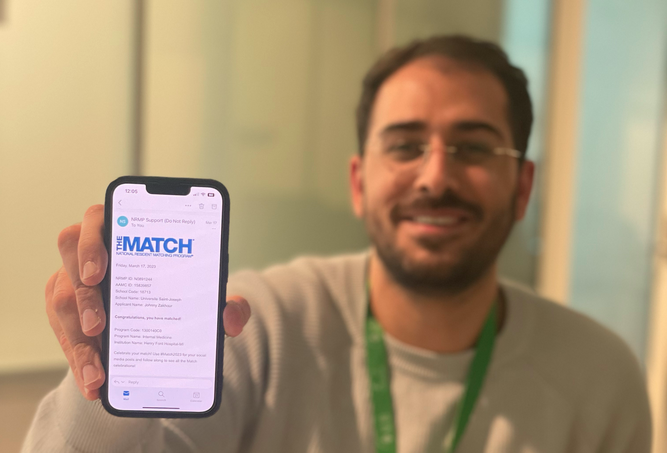If you are considering booking one of our virtual telehealth clinical experiences, you probably have a ton of questions. Virtual rotations are as much of a new frontier for medical education as telehealth is for the healthcare industry.
New things can be both exciting and terrifying. To help get rid of the latter, we compiled the most common questions on our virtual clinical experiences and their answers. Hopefully, the information shared in this post can help you decide if these experiences have a place in your medical journey.
How far in advance should I apply to/reserve this type of experience?
Our virtual clinical experiences can be planned in a much shorter time than those that are in person since our virtual experiences do not require a visa. We recommend applying to and reserving your virtual clinical experience at least three months prior to the month you would like to participate.
The reason we recommend three months is because we require all documents and payment for clinical experiences to be submitted at least 45 days prior to the rotation start date. Applying and reserving your experience three months in advance gives you about a month and a half to complete the items above.
On occasion, we may be able to meet requests for last-minute experiences. To plan a last-minute virtual clinical experience, please email our advisors at advisors@amopportunities.org.
What expenses are associated with virtual clinical experiences?
For our virtual experiences, there are only two expenses you will need to budget for: the clinical experience itself and malpractice insurance. Our virtual clinical experiences are as low as $2,199 for four weeks, and malpractice insurance through AMO is only $199! Depending on the program you select, you could pay just $2,500 for your clinical experience. When compared to our in-person rotations, a virtual clinical experience is a more affordable option for elevating your medical education.
Why aren’t virtual experiences cheaper?
The payment for our virtual clinical experiences is comparable to the cost of our in-person rotations because the quality is the same! Visitors who participate in virtual clinical experiences are immersed in the U.S. healthcare system by virtually connecting with a U.S. physician and their patients. Each week you will spend at least 20 hours participating in the experience and will see between five and 10 patients per day.
Not only that, but you can save time and money since both are needed when it comes to planning the additional expenses of an in-person experience. These require visas, airfare to come to the U.S., and four weeks of housing, transportation, meals, and insurance. With a virtual clinical experience, you can forget about planning and paying for these items.
Can I improve my clinical skills if the experience isn’t in-person?
Yes! Depending on the experience selected, you may have the opportunity to record patient histories and make visual exams. You will also be able to improve your professional communication skills when interacting with your precepting physician and others participating in the same experience as you.
During a virtual clinical experience, you will also be able to learn a new set of skills that you cannot learn in an in-person experience. These include resolving technical issues that may arise while providing telehealth services. Telehealth is the future of medicine. Obtaining these skills can help you stand out from your fellow medial students, residency applications, or job candidates.
Would an in-person experience be more beneficial for me?
Deciding between an in-person rotation and a virtual clinical experience is a personal one. Both experiences have benefits and tradeoffs. In-person experiences can be great if you are considering working in the U.S. in the future. It can allow you to experience the culture outside of clinical hours. These experiences can become quite expensive, however, since housing, meals, and transportation add up.
Virtual experiences can be an affordable alternative, allowing you to save money and obtain both experience and a letter of recommendation. These have value whether you are looking to fulfill school credits or apply for residency. Virtual clinical experiences are also an excellent option if you are concerned about traveling during this time. For a complete list of the benefits of virtual clinical experiences, click here.
How does a letter of recommendation from this type of experience compare to one earned in-person?
The LoR earned during a virtual clinical experience is no different than one earned in an in-person experience. In both cases, the letter is based on merit. This means you must have good attendance, be respectful, and show interest in the curriculum. The letterhead of the document will be determined by the precepting physician unless otherwise noted on the program page.
If you are looking for ways to ensure you have a strong letter of recommendation, read our Guide to Letters of Recommendation.
Can I use the LoR I earn in a virtual telehealth clinical experience to apply for The Match?
As mentioned, LoRs earned during virtual experiences hold the same weight as those from in-person experiences; they, too, can be used when applying for U.S. medical residency through the National Residency Matching Program.
If you are planning to apply to The Match, consider waiving your rights to view the letter. Instead, have your preceptor upload it to ERAS themselves. For more information on this, check out our Guide to Letters of Recommendation.
Have more questions? Our advisors are happy to answer them! Send them an email at advisors@amopportunities.org.
Is a virtual clinical experience is right for you?







Leave A Comment